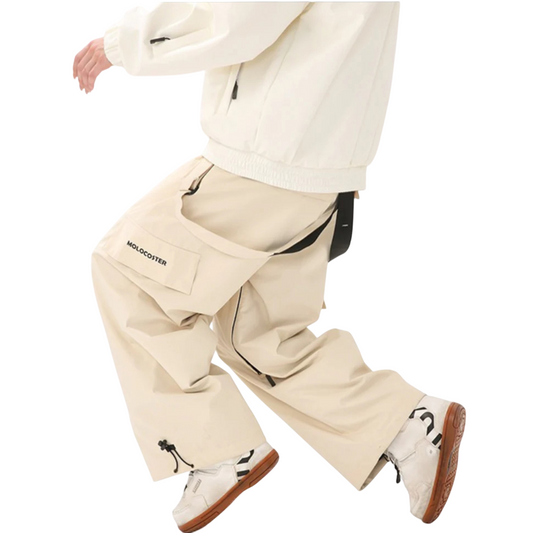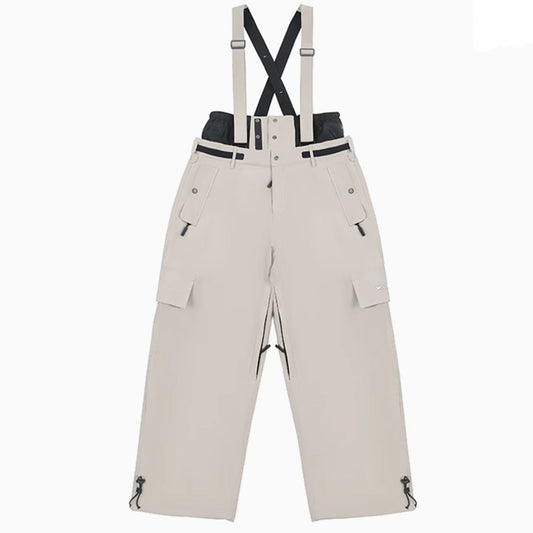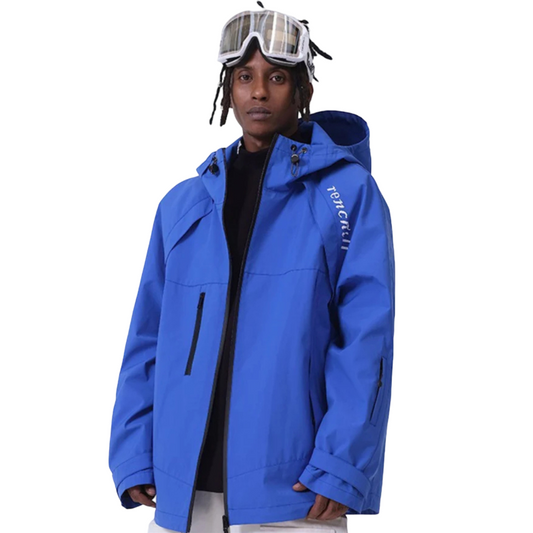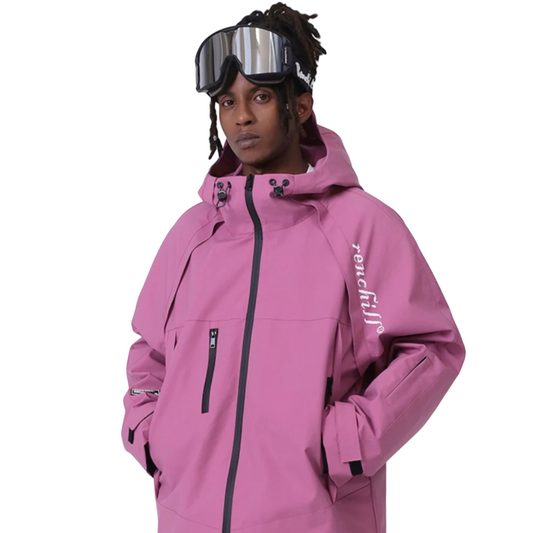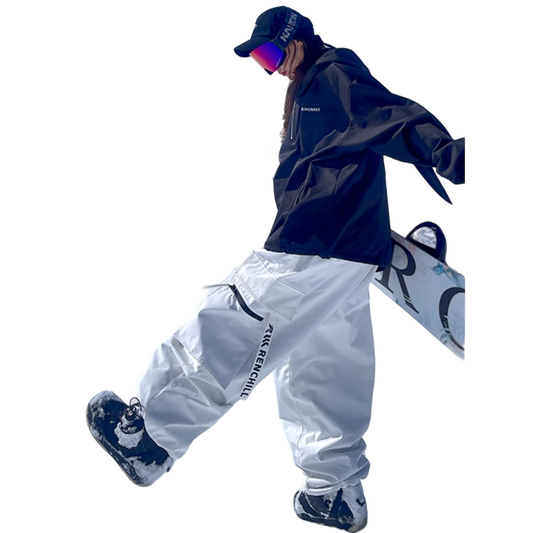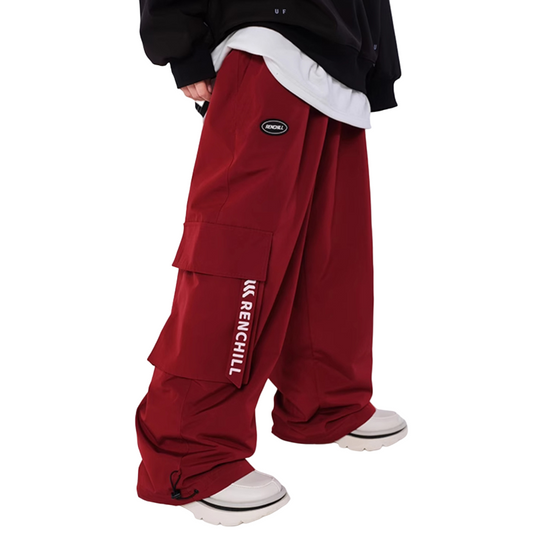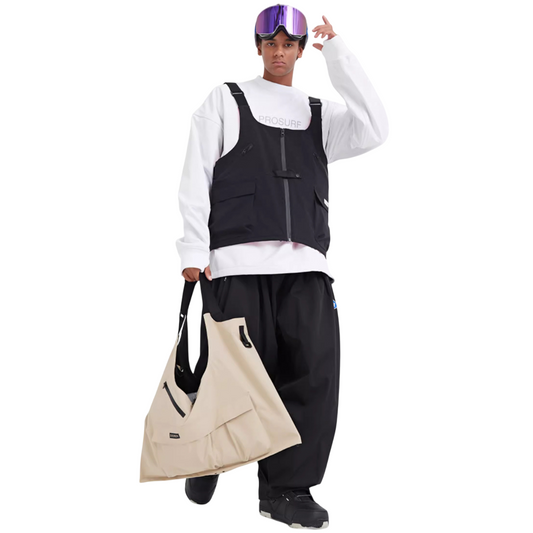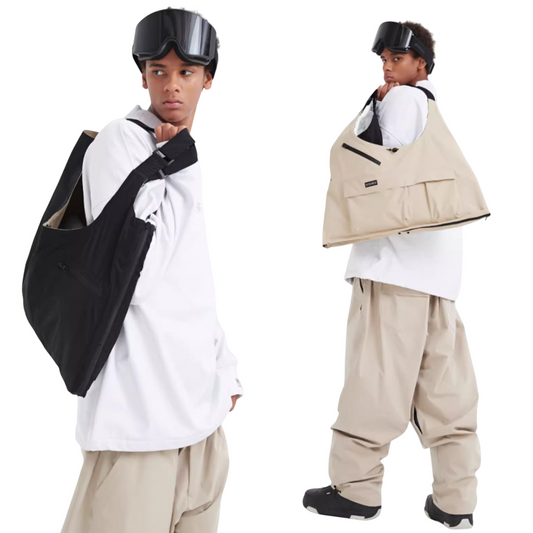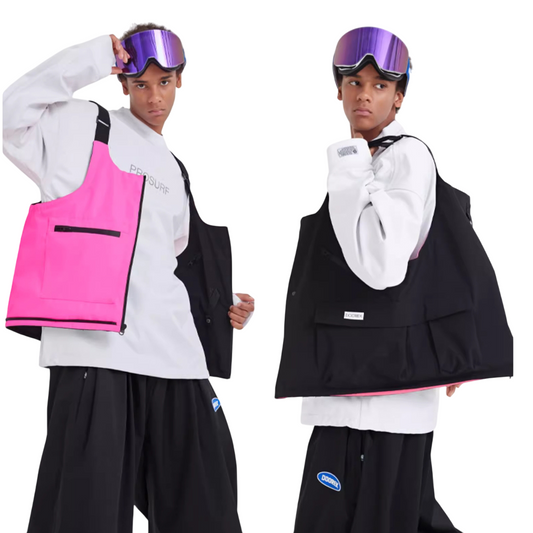The best time to experience Japan’s famous powder is mid-January through February, with January offering the deepest and most reliable snow. Japan’s powder stands out for its dryness, fluffiness, and depth, thanks to cold Siberian winds crossing the Sea of Japan. You will find the main ski regions in Hokkaido and Honshu. Hokkaido features lighter, drier snow, while Honshu offers steeper terrain and impressive snowfall. Check out the weekly snowfall averages at top resorts:
|
Ski Resort |
Location |
Mid-Jan to Feb Weekly Average Snowfall (cm) |
|---|---|---|
|
Hakuba |
Honshu |
~40 to 42 |
|
Nozawa Onsen |
Honshu |
75.8 |
|
Myoko |
Honshu |
123 to 138 |
|
Niseko |
Hokkaido |
Peak weeks are early to mid-January |
|
Furano |
Hokkaido |
~49.7 |

- Japan’s powder is light, dry, and deep—often waist-deep—which makes skiing in Japan smooth and forgiving.
- Resorts like those in the Best Ski Resorts in Japan list see consistent, world-class conditions.
You need the right gear for these conditions. A SNOWMOCACA Snow Suit keeps you warm and dry all season. Enjoy FREE SHIPPING on orders over $99! ❄️
Key Takeaways
- The best time to ski Japan’s famous powder snow is from mid-January to February, with January offering the deepest and most reliable snow.
- Hokkaido has lighter, drier powder and mellow terrain, while Honshu offers steeper slopes and more challenging runs with great powder too.
- Booking early is important because the best powder season is popular and resorts fill up fast, especially in Niseko and Hakuba.
- Wearing the right gear, like the SNOWMOCACA Snow Suit, keeps you warm, dry, and comfortable in deep powder conditions.
- Planning your trip with flexible dates, checking weather reports, and packing smart layers helps you enjoy the best powder and avoid crowds.
Best Time to Ski in Japan
Peak Powder Season
You probably wonder when to ski in Japan for the deepest, driest powder. The answer is clear: the peak powder season runs from mid-January through February. During this time, you get the best time to ski in Japan for powder lovers. January stands out as the prime month, with February offering equally impressive conditions. Resorts across Hokkaido and Honshu receive regular storms that blanket the mountains in fresh powder. You will find that skiing in Japan during these weeks means you can expect consistent powder snow conditions almost every day.
The peak powder season brings the most reliable snowpack. Cold Siberian winds cross the Sea of Japan, picking up moisture and dropping it as light, fluffy snow. This process creates the famous Japanese powder that draws skiers and snowboarders from around the world. If you want the best skiing in Japan, you should plan your trip for mid-January to late February. Resorts like Niseko, Furano, and Hakuba reach their snowiest weeks, making this the best time to ski powder in Japan.
Tip: Book your trip early for the peak powder season. Resorts fill up fast, and you do not want to miss out on the best powder skiing in Japan.
When to Ski in Japan
When to ski in Japan depends on what you want from your trip. The japan ski season starts in mid-December and runs through early May, but not all months offer the same experience. If you visit in late December or early January, you may find good powder, especially in northern regions like Hokkaido. However, snow conditions in these early weeks can be less reliable and more variable. Some resorts may have limited terrain open, especially those without snow-making machines.
Here is what you can expect during the Japanese ski season:
- The snow season in Japan begins in mid- to late December. Early weeks bring lighter crowds, but snow coverage can vary.
- Hokkaido and Tohoku regions often see earlier and more consistent snowfall. You will find better powder snow conditions on groomed slopes in these areas during the early season.
- The peak period, from mid-January to late February, delivers the most consistent and abundant snowfall. This is when to ski in Japan for the deepest powder and the best skiing in Japan.
- February remains a top choice for powder skiing in Japan. Resorts stay busy, but the snow quality and volume reach their peak.
- March and April bring spring conditions. You get fewer crowds and warmer weather, but powder becomes less frequent.
When you plan your trip, consider the japan ski season dates. Most resorts open in December, but the best time of year to visit for powder is mid-January to February. If you want to avoid crowds, early January or late February can work, but you may trade off some powder reliability. The japan snow season offers something for everyone, but true powder hounds should target the heart of winter.
Note: The japan ski season dates can vary by region and snowfall. Always check resort updates before booking.
If you want to experience the legendary japan powder skiing, aim for the peak weeks. You will enjoy the lightest, driest powder snow conditions and see why skiing in Japan is world-famous. Whether you choose Hokkaido for its consistent storms or Honshu for its steep terrain, the best time of year to visit is clear. Plan for mid-January to February, and you will discover why japan powder skiing is unmatched anywhere else.
Month-by-Month Guide
December
You will find the start of the japan ski season in December. Early December brings variable snow quality, with some resorts relying on snow-making machines. Resorts in Hokkaido, such as Niseko, often open by late November or early December. Nagano resorts like Hakuba also benefit from early openings. The snow in Hokkaido and Hakuba is light, dry, and fluffy, but coverage can be thin at first. As December progresses, powder snow conditions improve. Early December offers fewer crowds and lower prices, making it a good time for beginners or those who want quiet slopes. Crowds increase during the Christmas and New Year holidays, and prices rise as well.
- Early December: Less reliable powder, fewer crowds, lower prices.
- Late December: Better snow quality, more powder, higher prices, and busier slopes.
January
January marks the heart of the japan ski season. You will experience the most reliable powder and deep snowpacks. Resorts like Hakuba and Hokkaido receive heavy, consistent snowfall. For example, Niseko can get 68 cm of snow overnight, and Hakuba often sees 60 cm in a single night. Powder snow conditions reach their peak, with fresh snow almost daily. This month brings the best skiing in Japan for powder lovers, but also the largest crowds and higher prices.
|
Month Range |
Snow Conditions and Powder Reliability |
Pros |
Cons |
Recommended Locations |
|---|---|---|---|---|
|
Peak months for heavy snowfall and high-quality powder; fresh snow almost daily; deep and stable conditions |
Best-quality powder snow |
Largest crowds, expensive |
Hokkaido, Hakuba, Northeast Japan |
February
February continues the peak of the japan ski season. You will find abundant powder and excellent snow quality, especially in Hokkaido and Hakuba. Average temperatures in Hokkaido range from -10°C to 0°C, with frequent snowfalls. Resorts in Sapporo and Hakuba see heavy snow, supporting major ski events and festivals. Powder remains deep and light, making skiing in Japan unforgettable. Crowds stay high, but the snow quality and powder reliability are unmatched. February is perfect for advanced skiers and powder chasers.
Tip: Book early for February trips to secure the best accommodations and lift tickets.
March
March signals the transition from peak winter to spring in the japan snow season. Snowfall becomes less frequent, but temperatures in Hokkaido and Hakuba remain low enough to keep the powder light and fluffy. Resorts maintain deep snowpacks, so skiing stays enjoyable. You will notice fewer crowds and lower prices, making March a budget-friendly time for skiing in Japan. Heavy late-season snowfalls can create excellent powder days, but also bring operational challenges like lift closures.
April
April marks the end of the snow season in Japan. Many higher-altitude resorts, such as those in Hokkaido and Hakuba, stay open into late April or even May. Spring skiing offers soft snow, fewer crowds, and discounted lift tickets—sometimes 20-30% off. Powder becomes rare, but snowpack remains good at higher elevations. You can enjoy relaxed skiing, sunny days, and great deals on accommodations.
- Spring skiing: Fewer crowds, lower prices, good snow at high elevations.
- Powder: Less frequent, but still possible in northern and high-altitude resorts.
Regional Differences: Hokkaido vs Honshu
Hokkaido Powder
When you think of skiing in Japan, Hokkaido often comes to mind first. This region is famous for its consistent powder, thanks to cold Siberian winds that bring frequent snowstorms. Resorts like Niseko and Furano see some of the lightest and driest powder in the world. The snow quality here stands out because it stays fluffy and soft, even after several days. You will find that skiing in Hokkaido means deep powder almost every day during the peak season. The Niseko ski season is especially popular with powder hounds who want reliable conditions.
Hokkaido resorts sit at lower elevations, usually around 1200 meters. The terrain is mellow, with lots of tree skiing and backcountry options. You can expect a laid-back vibe and modern facilities. However, the weather can be stormy, and wind or lift closures sometimes happen. If you love powder and want a relaxed experience, skiing in Hokkaido is a top choice.
Honshu Powder
Honshu offers a different experience for skiing in Japan. Resorts like Hakuba and Nozawa Onsen sit in the Japanese Alps, where you find steeper and more technical terrain. The Hakuba ski season brings heavy storms, and some areas, like Aomori, receive even more snowfall than Sapporo. Powder here can be deeper, but sometimes wetter, especially at lower elevations. At higher altitudes, the snow stays drier and lighter, making skiing in Hakuba a favorite for advanced skiers.
You will notice that Honshu resorts reach higher elevations, up to 2307 meters at places like Shiga Kogen. This elevation helps keep the powder fresh and the snow quality high. Skiing in Hakuba gives you access to challenging runs and authentic Japanese culture. The region also offers a traditional atmosphere, which many travelers enjoy.
|
City |
Location |
Average Annual Snowfall (inches) |
|---|---|---|
|
Aomori |
Honshu |
312 |
|
Toyama |
Honshu |
143 |
Travel and Terrain
Travel logistics play a big role in your ski trip. To reach Hokkaido, you usually fly into New Chitose Airport near Sapporo or take a domestic flight from Tokyo. The train journey is long, so most visitors choose to fly. You may need to plan for luggage transfers or an overnight stay in Sapporo. Hokkaido is best for those who want deep powder and do not mind extra travel steps.
Honshu is easier to access. You can fly into Tokyo or Osaka and take a bullet train to resorts like Hakuba in as little as 90 minutes. This makes skiing in Hakuba a great option for families, first-timers, or anyone who wants to combine skiing with sightseeing. Honshu’s milder weather and cultural experiences make it a smooth choice for many travelers.
Tip: If you want consistent japanese powder and mellow terrain, choose Hokkaido. For steeper slopes, more culture, and easier travel, Hakuba and other Honshu resorts are ideal.
Best Ski Resorts in Japan
Hokkaido Resorts
You will find that Hokkaido offers some of the best ski resorts in Japan for powder enthusiasts. Niseko United stands out with its legendary "Japow" powder, four interconnected resorts, and night skiing under floodlights. You can relax in traditional onsens with views of Mount Yotei after a day on the slopes. Rusutsu provides over 500 inches of light, dry snow each season. You will enjoy tree-lined slopes, off-piste areas, and a family-friendly atmosphere with short lift lines, even during peak times. Furano gives you a quieter, more traditional Japanese experience. The resort features two interconnected zones, panoramic views of Mount Tokachi, and excellent off-piste skiing. Kiroro is famous for some of Japan’s deepest snowfall and peaceful, uncrowded slopes. You can access lift-served backcountry terrain and stay in luxury ski-in ski-out hotels.
Honshu Resorts
Hakuba Valley ranks among the best ski resorts in Japan, especially for those who want variety and challenge. The valley includes ten interconnected resorts, such as Hakuba and Cortina. You will find over 200 runs and 85 miles of terrain, making it a mecca for backcountry skiing. Cortina is a powder mecca with steep tree runs and an open off-piste policy. Madarao Kogen offers more than half its terrain ungroomed so that you can enjoy untracked powder and varied terrain, including open tree runs and steep bowls. Seki Onsen receives up to 16 meters of snow per season and allows unrestricted off-piste skiing. Suginohara is known for long powder runs and heavy snowfall, while Tenjindaira attracts local backcountry skiers with amazing sidecountry terrain.
Unique Experiences
You will discover that japan ski resorts deliver more than just great snow. Niseko United lets you ski under the stars and soak in onsens with mountain views. Rusutsu and Kiroro offer uncrowded slopes and a relaxed vibe, perfect for families. Hakuba Valley combines Olympic history, traditional ryokans, and easy access from Tokyo. You can watch snow monkeys in hot springs near Hakuba, then enjoy bluebird powder days. These top resorts blend world-class powder, diverse terrain, and cultural immersion, making skiing in Japan a truly unique adventure.
Tip: For the best skiing in japan, visit Hokkaido for consistent powder and Hakuba for steep terrain and cultural experiences. Both regions feature top resorts that cater to families and advanced skiers alike.
Gear for Powder: SNOWMOCACA Snow Suit


Why Gear Matters
When you ski or snowboard in deep powder, your gear makes a huge difference in both safety and comfort. You need clothing that keeps you dry, warm, and able to move freely. Ski jackets with helmet-compatible hoods and powder skirts help block snow from getting inside your layers. Ski pants made from waterproof and breathable fabrics, like Gore-Tex, keep you dry even when you fall or ride through deep snow. Features such as powder cuffs, adjustable waistbands, and vents in your pants and jacket help you stay comfortable and protected all day.
- Powder skirts stop snow from sneaking into your jacket during falls.
- Powder cuffs and adjustable waistbands on pants seal out snow and keep you dry.
- Lightweight, breathable materials help you stay warm without overheating or feeling bulky.
Choosing the right gear means you can focus on enjoying the powder instead of worrying about getting cold or wet.
SNOWMOCACA Snow Suit Features
The SNOWMOCACA Snow Suit stands out for its thoughtful design and high-performance features. Here’s what makes it perfect for Japan’s powder season:
|
Feature Category |
Key Attributes |
|---|---|
|
Waterproofing |
Bonded membrane (10,000 mm), PFAS-free DWR, taped seams |
|
Insulation |
Warm synthetic insulation for cold conditions |
|
Breathability |
10,000 g rating, under-arm mesh vents |
|
Fit & Comfort |
Adjustable cuffs, elastic hems, reinforced areas, and stretch panels for plus sizes |
You stay dry, warm, and comfortable, even on the deepest powder days. SNOWMOCACA offers FREE SHIPPING on orders over $99, making it a smart choice for your next trip.
Choosing Your Snow Set
To get the most out of your snow suit, you should layer properly. Start with a moisture-wicking base layer to keep sweat off your skin. Add a mid-layer for warmth and breathability, like a half-zip fleece. On very cold days, use a lightweight insulated jacket under your snow suit. Finish with your SNOWMOCACA outer layer for wind and snow protection. You can also explore ski jackets for women, men, vintage or retro styles, and even the best youth ski jackets for younger riders.
For more tips on ski outfits and gear, visit the SNOWMOCACA blog before your next adventure!
When to Ski: Planning Tips
Booking and Crowds
You want to make the most of the japan ski season, so booking early is key. The best powder arrives from early January to mid-February, but this is also when crowds peak. Hokkaido resorts like Niseko and Rusutsu fill up quickly because of their famous powder. Hakuba also gets busy, especially during holidays like the Chinese New Year. To avoid crowds, try to ski midweek and skip major holidays. Consider staying in smaller or lesser-known resorts in Hokkaido or Tohoku for a quieter experience. Booking your accommodations and lift tickets three to six months ahead gives you better choices and prices. You can also look for multi-day passes to save money and secure access.
- Book early for peak powder weeks.
- Avoid the New Year and the Chinese New Year for fewer crowds.
- Choose smaller resorts or ski midweek for a relaxed vibe.
Maximizing Powder Days
You want to chase the best powder days during your trip. Hokkaido offers the most reliable powder, with frequent storms and light, dry snow. Hakuba gives you steeper terrain and deep snow, especially in February. Stay flexible with your plans and check daily weather reports. Guided tours in Nagano or Hakuba help you find the quietest slopes and the freshest powder. If you want to ski off-piste, always follow resort rules and carry avalanche safety gear. Renting a campervan or staying in central locations lets you move between resorts and catch the best snow. Add rest days to recover and enjoy onsens or local food.
Tip: Stay flexible and use local guides to maximize your powder days and enjoy the full japan ski season.
Packing and Outfits
Packing smart helps you enjoy skiing in japan, no matter the weather. Bring waterproof ski jackets and pants, thermal base layers, and mid-layers like fleece. You need ski socks, insulated gloves, a helmet, and goggles with low-light lenses for powder days. Pack a small backpack for water, snacks, and extra layers. If you plan to visit onsens, bring a small towel and swimwear. For off-piste skiing, carry an avalanche kit. Temperatures in Hokkaido and Hakuba can drop to -15°C, so layer up. Don’t forget après-ski clothes and a power adapter for your devices.
|
Category |
Essentials |
|---|---|
|
Clothing Layers |
Thermal tops/bottoms, fleece, a waterproof jacket, and pants |
|
Accessories |
Ski socks, gloves, neck warmer, helmet, goggles |
|
Off-the-Slopes |
Sweaters, jeans, boots, a towel, and swimwear |
|
Ski Gear |
Skis/snowboard for powder, poles, avalanche kit (off-piste) |
For more tips on ski outfits and gear, check out the SNOWMOCACA blog for the latest advice on the japan ski season.
You will find the best powder snow in Japan from mid-January to February, with January offering the deepest, driest conditions. Cold Siberian air creates the famous "Japow" that draws skiers worldwide. Use the table below to help you choose the right time and region for your trip:
|
Season |
Dates |
Key Characteristics |
Recommended Resorts |
|---|---|---|---|
|
Peak Season |
Early Jan–Mid Feb |
Best powder, heavy snowfall, lively festivals, busy slopes |
Niseko, Hakuba, Nozawa Onsen |
Plan ahead, select your ideal resort, and stay warm with a SNOWMOCACA Snow Suit. Enjoy FREE SHIPPING on orders over $99. For more tips, check out these helpful resources:
- 'Where to Ski in Japan: from Hakuba to Niseko' for resort advice and travel tips
- 'Top 10 Skiing Tips for Family Adventures' and other guides on the SNOWMOCACA blog
Start planning your Japan ski adventure today and experience world-class powder, vibrant culture, and unforgettable memories! 🎿
FAQ
What is the best time to ski powder in Japan?
You will find the best time to ski powder in Japan from mid-January to February. This period brings the most reliable powder snow conditions and the deepest snow. Resorts like Niseko and Hakuba reach their peak powder season during these weeks.
How does the snow quality in Hokkaido compare to Honshu?
Hokkaido offers lighter and drier powder than Honshu. You will notice that skiing in Hokkaido means more consistent powder days. Honshu, especially Hakuba, has steeper terrain and sometimes wetter snow at lower elevations, but both regions deliver excellent powder skiing in Japan.
Are Japan ski resorts crowded during the peak powder season?
Japan ski resorts get busy during the peak powder season, especially in January and February. You can avoid the largest crowds by skiing midweek or visiting smaller top resorts. Booking early helps you secure the best accommodations and lift tickets.
What should you pack for the Japan ski season?
You should pack waterproof jackets, thermal layers, ski socks, gloves, and goggles. Bring a helmet and avalanche kit if you plan off-piste skiing. The snow season in Japan can be cold, so layering keeps you warm and ready for powder days.
When do most Japan ski resorts open and close?
Most Japan ski resorts open in December and close by late April or early May. The best time of year to visit for powder is mid-January to February. Always check the latest Japan ski season dates before planning your trip.








